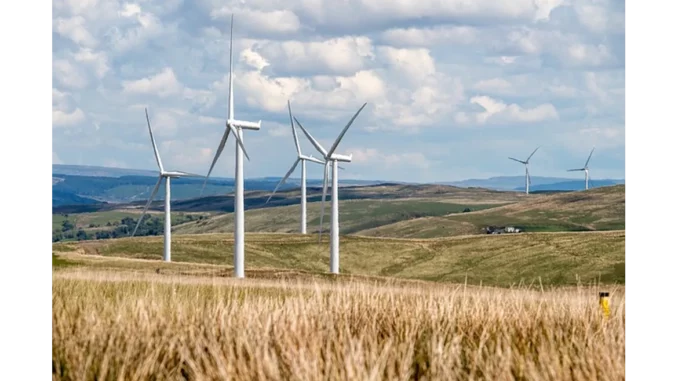
In the contemporary landscape of energy production, where sustainable solutions are imperative, the Eastern Green Link 2 (EGL2) project emerges as a landmark of innovation and forward-thinking. This £1.6 billion initiative is poised to transform the way renewable energy is transferred across the United Kingdom, and I recently had the privilege of conversing with Emily Thompson, a project engineer who has been instrumental in bringing this ambitious vision to life.
Discover how Focus360 Energy aids sustainable development with Sustainability Statements.
Emily, a veteran in renewable energy systems, has been an integral part of EGL2 since its inception. Her passion for the project was palpable as she shared insights and aspirations that underscore the project’s significance. “The Eastern Green Link 2 is not merely another infrastructure endeavour,” she emphasised, her enthusiasm evident. “It represents a transformative venture that encapsulates bridging geographical divides through advanced technology and visionary planning.” The project involves laying undersea cables stretching 271 miles from Peterhead in Scotland to Drax in North Yorkshire, England, a feat that is about far more than just geographical distance. It is about seamlessly integrating diverse energy sources to meet varying demands with unprecedented efficiency.
Initiated in July 2024, the construction of EGL2 marks a critical stride in the UK’s strategy to enhance its renewable energy framework. Emily elucidated that the high-voltage direct current (HVDC) link is designed to transport surplus renewable energy, predominantly generated by wind farms in Scotland, to regions in England with heightened electricity needs. “Scotland’s renewable energy potential is akin to untapped gold,” she remarked. “The abundant wind resources can produce an excess of clean energy. However, without effective transmission strategies, this surplus risks being underutilised. EGL2 is essential, acting as a high-speed highway for electricity, ensuring this renewable energy reaches areas where it’s most needed.”
Emily’s involvement offers her a unique perspective on the intricate planning and engineering challenges that EGL2 presents. She described the technical hurdles of laying undersea cables on such a grand scale, from ensuring minimal environmental disruption to navigating the logistical complexities inherent in the installation process. “Coordinating the laying of these cables across vast stretches of water is akin to an engineering ballet,” she explained, with a sense of pride. “Considerations range from the seabed’s geological characteristics to the migratory patterns of marine life. Our objective is to integrate this infrastructure into the natural environment as seamlessly as possible.”
EGL2 is more than a technical marvel; it is a crucial step towards the UK’s commitment to achieving net-zero carbon emissions. By enabling the transfer of renewable energy across regions, the project diminishes dependency on fossil fuels, powering millions of homes with clean energy and significantly reducing carbon emissions. “This is a game-changer for the UK’s energy landscape,” Emily noted. “Connecting our energy grids improves energy security and actively contributes to the nation’s net-zero goals. It’s an investment in a sustainable future for generations to come.”
For Emily, the project transcends professional obligations; it is a personal mission. Her dedication to renewable energy is driven by a desire to leave a positive impact on the world. “Knowing that my work contributes to a cleaner planet is incredibly fulfilling,” she shared. “Each challenge we overcome brings us one step closer to a sustainable future.”
As our discussion concluded, Emily reflected on the broader implications of EGL2. Beyond the technical milestones and environmental gains, she views the project as a testament to human ingenuity and collaborative spirit. “This project is a reminder of what we can achieve when united for a common purpose,” she stated. “It is both an inspiration and a call to action for all of us to continue pushing the boundaries of what is possible in renewable energy.”
The Eastern Green Link 2 is more than just an engineering achievement; it embodies a vision of a future where technology and sustainability are inextricably linked. As the cables of EGL2 stretch beneath the waters, they carry not only electricity but also a profound hope for a greener, more interconnected world.


Be the first to comment